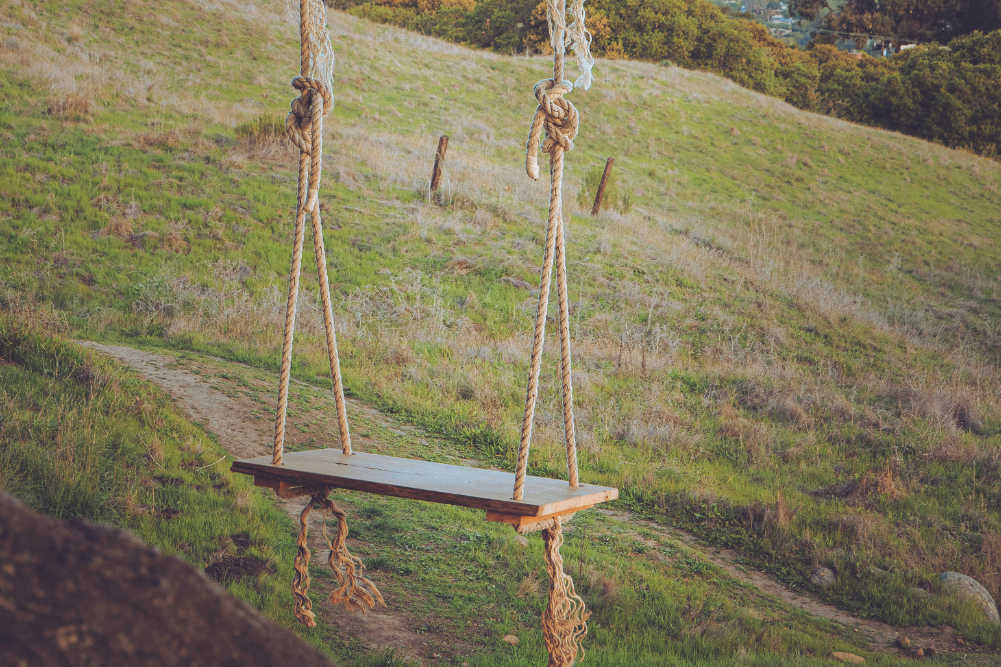“When we engage in nostalgia, we are not moving toward the past. We are bringing the past to the present to help us plan for the future. Nostalgia pushes us forward, not back,” writes nostalgia researcher and psychologist Clay Routledge in his book Past Forward: How Nostalgia Can Help You Live a More Meaningful Life.
We’ve all experienced nostalgia: a whiff of perfume, a familiar song, a faded photograph. These things can spur deep waves of longing for the past, for places, people or a version of ourselves we wish we could return to.
Although looking back might sometimes be seen as unhelpful, a way of keeping you “stuck in the past” instead of living mindfully in the present, an increasing body of research suggests that embracing nostalgia actually boosts your wellbeing. Nostalgia can evokejoy, make you more creative, strengthen social bonds, increase your problem-solving abilities and help you feel more connected with your sense of self and purpose.
The pain of returning home
From the Greek word nostos, meaning to return home, and algos, pain, nostalgia translates to “the pain of returning home”. The term nostalgia was first coined in the 17th century by Swiss medical student Johannes Hofer, after he observed returning soldiers exhibiting symptoms including persistently thinking of home, bouts of weeping, anxiety and insomnia.
Hofer and other physicians at the time viewed nostalgia as a neurological disease and it was later considered a mental health condition. It’s only in the late 20th century that nostalgia has been recognised for its positive and therapeutic benefits.
Perth-based health and community psychologist Dr Marny Lishman regularly speaks with her clients about the importance of deep diving into the good bits of their past to help design their future. “Nostalgia is the sentimental feelings we have for a former time in our life,” says Lishman. “All of our senses can evoke a feeling of nostalgia. It could be a photo of our childhood, the taste of a familiar cake from the cafe that reminds you of a family favourite cooked by your grandma, a conversation with an old classmate about school days or even a smell of a particular aftershave that reminds you of past love.”
Engaging with nostalgia, rather than dismissing it, can help us feel happier. “The reason why nostalgia feels so good is that our primal brain doesn’t know the difference between a thought and reality,” says Lishman. “If we’re revisiting happy times in our mind, our body reacts as though it’s happening now. The part of the brain that holds our memories lies right next to the part that controls our emotions. That’s why we can cry, laugh or just give a sly little smirk to ourselves when we reminisce about what we got up to in the past.”
Escaping the present
With the bad-news cycle of the lasts few years, it makes sense that now, perhaps more than ever, we are looking to the past for comfort. “Nostalgia does seem to be having a moment right now, whether it is new movies coming out reminding us of the toys we played with as kids [eg Barbie], television shows we watched that are now on streaming devices and even going down the rabbit hole of decades-old music concerts on TikTok, the feeling of nostalgia is literally at our fingertips if we want it,” says Lishman.
And research suggests that stress can make us feel more nostalgic than when things are going well. In a study published in the Journal of Personality and Social Psychology, researchers found that participants who were presented with negative news stories were more likely to engage in nostalgia than those who were presented with positive or neutral ones. “Technology has a huge part to play with this, as old collective memories are more accessible than ever, but many of us go looking for it too,” says Lishman. “It’s been a tough few years globally, so it’s natural for us to seek comfort and pleasure [in nostalgia], to balance out the emotional pain.”
What if …
But there is a difference between nostalgia, which is mostly a positive emotion, and being stuck in the past or ruminating on the “what ifs”. Self-awareness is key to identifying the difference and assessing how much of your day these thoughts are consuming. “If thinking about the past is particularly painful and people feel big emotions such as shame, guilt and perhaps resentment or bitterness, it may indicate that there is something [deeper] to be processed or explored,” says Caitlin Bell, a Queensland-based psychologist.
If someone is particularly resistant to change, holds grudges or constantly compares their current life unfavourably to their past, these could be signs of an unhealthy preoccupation with the past, rather than it being nostalgia. If there is no positive feeling and it is impacting someone’s life [causing distress], then it may be a sign to get help from a counsellor or psychologist.”
Social connection
Our joyful memories aren’t created in a vacuum. Some of your most nostalgic moments probably feature other people, family members, school friends and romantic partners. Talking about memories with others who were there, or finding those who share nostalgia for a similar era, pop-culture moment or childhood
hobby can help strengthen social bonds through shared interests and experiences.
Dr Routledge is also the vice president of research and director of the Human Flourishing Lab at Washington’s Archbridge Institute. His research has found people often associate their memories with social relationships, particularly close relationships like a friend, family member or spouse. “When you reflect on those memories, you bring to mind the relationships that makes you feel a greater sense of social connection,” he says. “Often, we turn to nostalgia when we feel distress. We might be about to go away to university or move to a new city to start a new job, or maybe you’ve lost a loved one and that can make you feel lonely or socially disconnected. You bring to mind these nostalgic memories and it’s a reminder that while life might not feel great now, life is bigger than this one moment.
Routledge continues: “That not only makes you feel less lonely in the present, but serves as a boost to your social confidence, [thinking to yourself] ‘I could do that again. I could reconnect with people. I can make new relationships.’ You can think about this in all sorts of life experiences where you feel uncertain or are doubting yourself. Your nostalgic memories can remind you that you’ve had to go through difficult life changes before and made it through, so it gives a sense of confidence.”
Self-worth and validation
One way of using nostalgia to boost feelings of self-worth and self-identity is reminiscence therapy, a type of psychotherapy that involves discussing experiences from the past. Often used with people with dementia or older adults with depression, it aims to evoke memories and stimulate mental activity, sometimes using props such as photographs, letters or music.
Bell has been involved in running reminiscence therapy in aged-care homes, where a group of residents would be invited to each reflect on their lives and share nostalgic memories. “It’s shown to be very effective to reduce depressive symptoms,” says Bell. “It’s helping patients through different senses like sound, smell, sight and evoking certain memories and getting them to share with the therapist. It encourages patients to communicate and really interact with the listener in the present.”
According to Bell, by speaking about and having others actively listen to their nostalgic memories, the participants were able to source a greater sense of self-worth and self-validation and to gain deeper connections with one another.
Reigniting creativity
Recalling happy memories can also help reignite passions and spark creativity. A memory of being gifted a guitar might remind you of why you fell in love with music, or recollections of baking cakes with your grandmother might remind you of why you love to cook. “People think nostalgia is going backwards but, really, it’s helping you connect [in the present] with the things that make you creative, make you inspired, that make you adventurous and open to new ideas,” says Routledge.
The more actively you engage with an activity, the better the nostalgic benefits, according to Routledge. “If you purposefully and intentionally start a journaling activity, where you spend 15–20 minutes writing about ‘nostalgic-me’ [memories and experiences of that time], you’ll get better engagement than just passively consuming nostalgia.”
If writing isn’t your thing, find what senses or nostalgic activities capture your creativity. “Anything that allows you to creatively engage with a memory,” says Routledge. “For some people, that might be cooking old family recipes. I think nostalgia is especially powerful if it’s multi-sensory, so food is a good one as there’s taste and smell.
For some people, it might be scrapbooking or other types of creative activities where you’re really putting yourself in that mindset of reflecting on memories and behaviours and experiences that you had in the past and recreating them or getting your mind in that space. The more you can do that, the better. There are studies that show a few minutes of nostalgic writing increases people’s openness to experience and their creative output.”
Young at heart
It’s often the memories of being young that are most nostalgic for us, and evoking those youthful memories not only helps you to feel younger, but can also motivate
you to move your body physically too. “There’s something about nostalgia as you approach middle age and beyond that really helps you recapture that youthful spirit,” says Routledge. “There are mental barriers to taking care of our health. Especially with physical exercise, people think: ‘Sure, I played sports when I was in high school, but I’m too old to do that kind of thing now.’ Nostalgia makes people feel younger and gives them that boldness to think they can do something to feel like that again. So, in addition to all the psychological health benefits, nostalgia can help people get motivated to move their bodies more.”
Using music from an era that brought you joy can be a great way to incorporate nostalgia into your exercise regime, according to Routledge. Create a nostalgic playlist of your favourite tracks from the ‘80s, ‘90s or ‘00s to listen to as you workout, dance around the house or enjoy in your headphones on a walk. Another way is to explore age-appropriate ways to connect with sports or hobbies you used to enjoy. Perhaps skateboarding isn’t practical anymore, but maybe cycling could give a similar experience.
So next time you feel a wave of nostalgia, don’t paddle against it. Surrender and let it carry you. Because developing a greater understanding of how past experiences relate to our current lives can help us find deeper meaning and form better relationships in the here and now. Sometimes we need to glance in the rearview mirror to find the best way forward.

